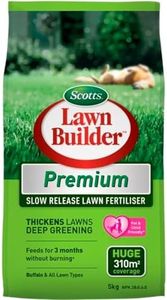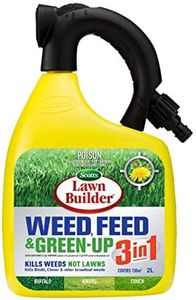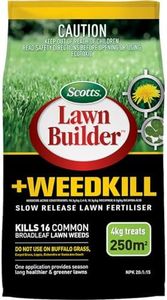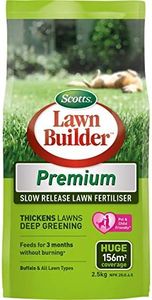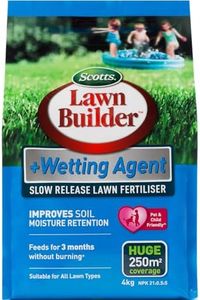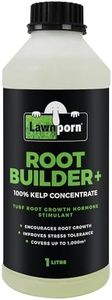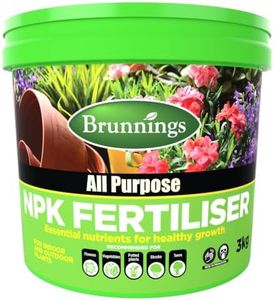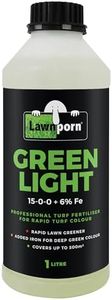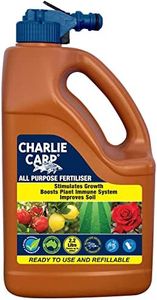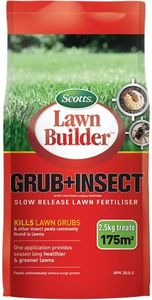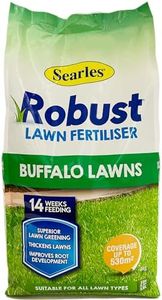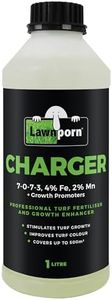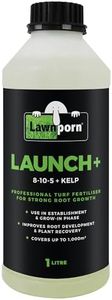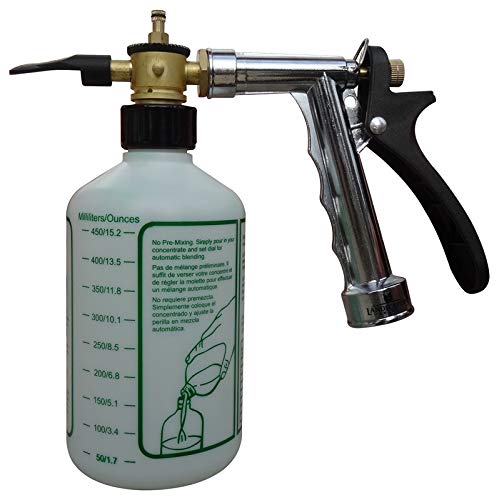We Use CookiesWe use cookies to enhance the security, performance,
functionality and for analytical and promotional activities. By continuing to browse this site you
are agreeing to our privacy policy
10 Best Fertilizer Lawns
From leading brands and best sellers available on the web.Buying Guide for the Best Fertilizer Lawns
Choosing the right fertilizer for your lawn can make a big difference in how healthy and green your grass looks. The best approach is to match the fertilizer to your type of grass, the season, and your lawn's current condition. Fertilizers have different strengths, release times, and added benefits, which can influence the growth and health of your lawn. Understanding a few key specifications can help you find the most suitable option for your specific needs.N-P-K RatioThis refers to the percentage of nitrogen (N), phosphorus (P), and potassium (K) in the fertilizer, usually shown as three numbers like 20-5-10. Nitrogen helps your grass grow lush and green, phosphorus supports root development, and potassium increases your lawn’s resistance to drought and disease. If you want quick green-up, a higher nitrogen value may help, while new lawns or seeding benefit from higher phosphorus. For established lawns, a balanced or low phosphorus option is often ideal. Consider your lawn’s current needs or get a soil test to decide which ratio fits your situation best.
Type (Granular vs. Liquid)Fertilizers are commonly available either as granules or as a liquid. Granular fertilizers are easy to apply and offer slow, controlled release of nutrients, making them a good choice for most home lawns. Liquid fertilizers act quickly, showing visible results in a shorter time, but may require more frequent applications and precise mixing. If you’re seeking convenience and long-lasting effects, granular is a safe bet. Liquid is useful if you need fast results or spot-treat specific areas.
Release Time (Slow-Release vs. Quick-Release)The release time tells you how fast the fertilizer’s nutrients become available to the grass. Slow-release fertilizers deliver nutrients gradually over weeks or even months, which prevents burning your grass and reduces how often you need to reapply. Quick-release fertilizers provide nutrients right away for rapid results, but may require more care during application to avoid overfeeding. Think about whether you want consistent lawn growth and less maintenance (slow-release), or instant green-up (quick-release).
Special AdditivesSome fertilizers include extras like weed control, insect or fungus protection, or soil enhancers. These additives can help address specific lawn problems: weed and feed products are useful for busy users seeking to tackle weeds and feed grass in one go; insect or disease control helps vulnerable lawns; soil enhancers aid poor or compacted soils. Consider these if your lawn has additional issues beyond just needing nutrients, but be sure they match your actual requirements.
Coverage AreaCoverage area tells you how much lawn the fertilizer package will treat, usually measured in square feet. Knowing your lawn’s size will help you pick a package that fits your needs and prevents over- or under-applying. If your lawn is large, larger packages are more economical and save time, while small lawns benefit from smaller, easier-to-handle bags.
